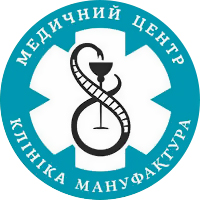Gastroscopy
Esophagogastroduodenoscopy
The diagnostic procedure purposed to examine the upper parts of the digestive tract: oropharynx, esophagus, stomach, duodenum. Esophagogastroduodenoscopy or gastroscopy is performed with an endoscope - a thin tube with a tiny camera and a diode lamp at the end. The endoscope is put into the patient's body through the mouth. A high-quality image magnified up to 200 times is displayed on the computer screen and analyzed by the doctor after the procedure.
How the gastroscopy is going:
The doctor manually advances the endoscope and carefully examine every centimeter of the interior area. To straighten the walls of the organ a carbon dioxide is supplied through the endoscope. The procedure lasts up to 15-20 minutes, but depends on the condition of the patient and the complexity of the disease. To relieve discomfort before inserting the endoscope the doctor applies a local anesthetic. Also the esophagogastroduodenoscopy can be performed during patient's medical sleep, when iscomfort from the procedure is completely excluded.
Other diagnostic can be done during gastroscopy:
- test for Helicobacter pylori (Н.pylori): detection of the helicobacter infection agent in the stomac. This pathogen causes gastritis, ulcer disease, adenocarcinoma and poorly differentiated lymphoma of the stomach. This infection can proceed with no special symptoms or cause dyspepsia of varying severity. Treatment of the gastrointestinal tract disorders differs significantly when this infection is detected.
- biopsy: taking a small fragment of the interior tissue for further histological analysis with the microscope. Biopsy is a safe both for healthy tissue and for neoplasms due to restoration ability of the mucosa. The importance of biopsy however cannot be overestimated, because it ensures the early detection of the oncology and this significantly increases the chances for successful treatment. The reason biopsy may be neoplasms or mucosal changes detected during esophagogastroduodenoscopy.
Chromoendoscopy (gastroscopy with contrast)
A type of esophagogastroduodenoscopy with the staining mucous for better visualization of its changes. Depending on the tissue interaction with the dye solution, the doctor can assess the nature of the process that led to mucous changes - benign or malignant, as well as reveal the scale of the lesion. This diagnostic method detects even the smallest lesions of the mucous, which are not always clearly visible during gastroscopy without staining.
In «Manufactura» clinic we also perform NBI-chromoendoscopy (NBI - narrow spectral imaging). This is the newest type of optical technology which visualizes the smallest structures of blood vessels and the mucous. It uses only those wavelengths of light that are absorbed by hemoglobin and capillary images become less blurred than during endoscopy with the use of white light. In this case the risk of missing affected areas is reduced. NBI-chromoendoscopy is currently the most effective way of diagnosing cancer cells in their initial stage.
Indications for gastroscopy:
Gastroscopy is indicated for any complaints of gastrointestinal disorders, pain, unpleasant sensations and discomfort in the abdomen. It is a mandatory examination to establish a diagnosis and prescribe treatment by a gastroenterologist.
How to prepare for esophagogastroduodenoscopy:
All endoscopic procedures are performed on an empty stomach, so at least 6 hours after the last meal, drink or medication. In the case of medicated sleep, on the eve of the gastroscopy, it is necessary to consult an anesthesiologist and pass additional tests: general blood test, blood glucose, electrocardiogram. All the results and conclusions of these pre-examinations must be taken with you for gastroscopy procedure.
When performing gastroscopy with contrast, it is important to know if your have an allergy to anesthetics (lidocaine) and dyes (Lugol's solution, indigo carmine).
After the procedure, you must refrain from eating for another 2 hours. Food should be non-irritating: not hot, not spicy, boiled or stewed, your food portions until the end of the day should be small up to 200-300 g.
Contraindications to the gastroscopy:
There are no absolute contraindications to the examination. For gastroscopy with a contrast may be the following contraindications:
- intolerance to anesthetics (local and general);
- intolerance to coloring agent;
- acute pancreatitis;
- infectious hepatitis;
- inflammation of the bile ducts with septic complications;
- patient's agony state.
The quality of endoscopic examinations our clinic:
Our gastroenterologists are well professional and experienced in diagnosis and treatment. We guarantee the comfort and safety of diagnostic endoscopic examinations due to high-quality endoscopic equipment and responsibility of our doctors. All the invasive manupulations and treatments are performed in accordance with EAES (European Association for Endoscopic Surgery and other Interventional Techniques) and UEG (United European Gastroenterology) protocols.
Make an appointment
Your name
Phone number
Direction
Desired date
Comment










